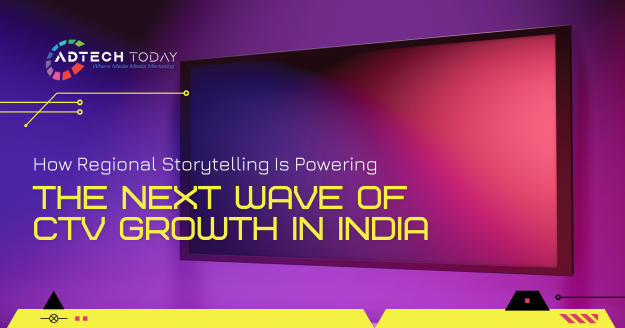
Connected TV’s growth story is no longer confined to India’s metros. As smart TVs flood into tier-2 and tier-3 households, a new wave of digital consumers is beginning to define what streaming looks like in Bharat. This shift isn’t only about access to screens; it’s about a deeper hunger for content that mirrors local culture, language, and everyday realities.
For marketers, this evolution is pushing CTV from a reach-led channel to a relevance-led one. The real opportunity now lies in speaking the language of the viewer, sometimes literally.
As audiences across smaller cities adopt streaming, brands are realising that a one-size-fits-all approach no longer works. Viewers are choosing shows that reflect their experiences, and advertisers are aligning their strategies accordingly.
Aruna Daryanani, Director at Amazon MX Player, captures this shift clearly.
“Brands are shifting from a one-size-fits-all approach to localized storytelling across their CTV ad campaigns. As a result, advertisers are increasingly leaning into regional narratives, dubbed international hits, and AI-driven personalization to unlock stronger cultural relevance. With premium shows including long-form originals (Ashram, Hunter), young adult dramas (Jamnapaar, Who’s your Gynac?) and unscripted reality series (Hip Hop India, Rise & Fall), brands have an opportunity to engage with relevant audiences across the content slate. With CTV view-time rising to nearly 80 minutes a day on Amazon MX Player, this customer-centric approach is helping brands deliver richer engagement and stronger audience connections that ultimately deliver more meaningful business results.”
With millions of new viewers joining the ecosystem, the numbers reflect a decisive shift toward regional content. Brands now recognise that meaningful engagement requires cultural specificity.
Chinmay Chandratre, Sr. VP Media at FCB/SIX India, sees the impact of these changes across platforms and brand behaviours.
“As smart TV adoption crosses 60 million households, with 35 million new CTV viewers added in Q1 2025 and streaming growing 53% in tier-2 and 78% in tier-3 cities, brands are shifting to highly localised CTV strategies. With 50% of OTT consumption now in non-Hindi regional languages and 57% of users preferring vernacular content, marketers are investing in hyper-local storytelling, regional influencers, and multi-language creatives. This culturally rooted approach is helping brands resonate more deeply with the 66% of India living beyond metros, making relevance—not just reach—the new CTV differentiator.”
As brands respond to this fragmentation, creative customization has become central to CTV planning. Campaigns today are expected to reflect the cultural rhythm of each region, not just translate a message.
Jainendrra Kumar, CEO of Animmoov Digital Media, points to a clear movement toward dynamic and interactive formats.
“With smart TV adoption surging in tier-2/3 India, brands are shifting to regional-first CTV narratives—local-language stories, culturally relevant visuals, and QR-based offers that feel native to each market. They’re prioritizing geo-targeted OTT/FAST inventory to improve relevance and efficiency. Animmoov ProTV helps brands do this seamlessly with instant multi-language creative versions, dynamic interactive overlays, regional targeting, and measurement that links CTV exposure to real engagement.”
The days of bundling CTV buying into a single national plan are fading fast. With audiences spread across diverse regions, advertisers are adopting more granular strategies that reflect local preferences, languages, and viewing behaviors.
Harshad Wadivkar, Business Head – Monetisation at CloudTV Ads, notes how this shift is transforming the way brands think about CTV.
“With smart TV adoption accelerating across India’s tier-2 and tier-3 cities, brands are no longer viewing connected TV as a single national media buy. Advertisers are shifting budgets toward regional OTT and FAST channels, creating multi-language versions of campaigns, and using dynamic creatives to tailor offers by state and language. When households in Kanpur or Coimbatore stream content, they expect stories that feel local. Regional CTV goes beyond just incremental reach. Bharat’s next wave of digital households is experiencing stronger engagement and lasting recall, enabling brands to build meaningful relationships with modern-day audiences.”
The rise of CTV in smaller cities is reshaping how marketers think about relevance, identity, and impact. Regional content is no longer an add-on, it’s becoming the foundation of how brands build trust with diverse audiences.
As India’s digital map expands, the future of CTV belongs to those who can speak not only to the nation but to every region within it.